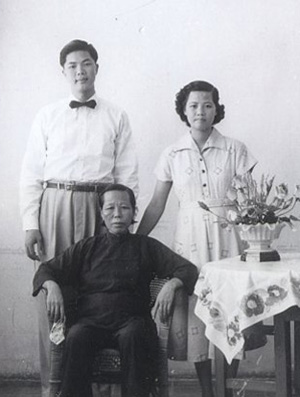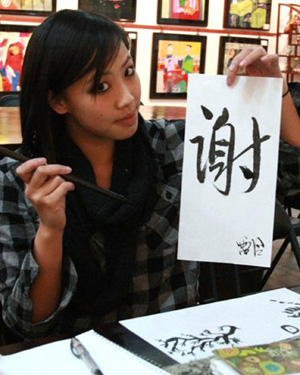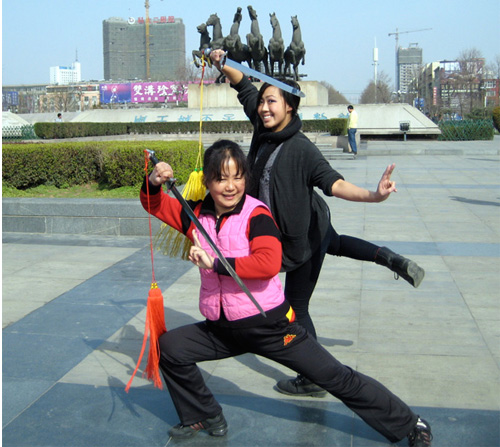BEIJING - The iPod plugged into my ear was playing David Bowie’s China Girl as I stepped aboard the Hainan Airlines flight at Pearson International Airport that was taking me back to my China roots.
Three generations and 10,611 kilometres — the distance between Toronto and Beijing — have separated me from my Chinese heritage. But in 13 hours — the flight time between Toronto and the Chinese capital — I’ll be home.
I’m a proud Canadian but I’m also proud of my Chinese heritage. And like so many Chinese Canadians — just like Scottish Canadians who tour Scotland to learn about where their family tree first took root, or Greek Canadians who return to Athens to explore the places their parents and grandparents remember so fondly from their youth — I want to find out for myself why all the fuss is being made about the land of my ancestor’s birth.
So when the China National Tourist Board and Hainan Airlines — one of only seven 5-star-rated airlines in the world which began flying into Toronto last year — offered me the chance to visit and share my story of discovery with TraveLife readers, I jumped at the chance.
My sense of Chinese culture, though, hasn’t gone far beyond multiple views of The Joy Luck Club, a grade 9 reading of “Forbidden City” and being the recipient of red bags filled with money at Chinese New Years.
Our 10-day trip would take me and some fellow journalists through the central region of China, based heavily in Henan province, and provided me with a variety of unique situations that were both intense and exhilarating.
Journeying to my motherland for the first time brought to light exactly how deprived I was of the 5,000-year-old Chinese culture and civilization.
First impressions upon arrival at Beijing International Airport: Wow!
After a domestic flight, we landed in Xian. It was like the biggest China Town I’ve ever seen.
There were bright neon lights featuring giant Chinese characters, colourful retail booths, fruit and vegetable stands and the scent of incents floating through the air seemed familiar.
That’s it. China’s streets smell just like my grandma’s basement.
Already, I feel right at home.

Above: Writer's family has deep roots in China.
Xian, the capital of Shaanxi province and once the capital of all China, is filled with gorgeous architecture and historic sites from the ancient times of the Zhou, Han and Tang dynasties. The Wild Goose Pagoda, a walk through the enchanting Huaching pool, a dumpling banquet and a visit to the city’s most famous residents, the Terracotta Warrior Army, launched my adventure into China.
Xian served as capital for the first Emperor Qin, the ruler who united all of China and was responsible for assembling the Terracotta Army that now guards his tomb. Qin also had the city’s northern wall erected — the first link in the Great Wall of China — because Xian was the starting point of the Silk Road, the trade route that first connected Asia with Europe.
The city’s Tangbo Art Museum features calligraphy and offers a fun, brief lesson on basic characters and symbols. Here I learnt that paper is one of the “Four Great Inventions” of ancient China. It’s on Chinese rice paper that calligraphy — the art my grandfather taught me — is best practiced.
Xian’s city wall was built over 800 years ago during the Ming Dynasty and helps divide the inner city from the outer city. It’s also the only wall of the many that were erected around ancient Chinese cities that remains intact.
A beautiful train ride brought us from the divine city of Xian to a significantly smaller city called Samnexia in Henan province. The translation of the city’s name means “the gorge of three gateways” — based on a legend about the Yellow River, the second largest river in China, just south of the city. It feels rural and has burial pits that contain relics discovered in the ’90s. Bronze water vessels, food containers and jade works created by the Western Guo State 2,700 years ago were on display at the local museum.
The modern version of Samnexia was built during the 1950s, and like other cities in the oldest Chinese province of Henan, it holds much ancient history in its ground. This area is often described as “the cradle of ancient Chinese civilization.”
Despite our accommodation at the hotel being less than stellar, the history of the city and the kindness of the local people made up for it. The showerhead hung over a grip-mat next to the toilet offered two options: burn care or water conservation. Toiletries such as soap, shampoo, lotion and condoms were available by the sink and a bright pink advertisement for Chinese call-girls rested by the bed. Although I suffered mild homesickness, I opted against making the call.
The most fascinating site I saw while in Samnexia was the Miao Shang Village where cave dwellers once lived. People in China have been living in caves for over 4,000 years and continue doing it because it’s cooler in the summer and warmer in the winter.
With around 200 caves and a population of 1,000 in the village, the tourism board wanted to give us a real treat and staged a traditional Chinese wedding. It was theatrical and almost believable — until the females playing the parts of the bride and groom revealed themselves.
We enjoyed another banquet before heading over to a Taoist temple. Scriptures on stones, sincerity stump and warrior statues were placed all around the spiritual site. A monk pointed at the cushioned stool and directed me to pray before pointing to the cash-donation box nearby. Apparently he thought I didn’t invest enough in my prayers because he made a face, pointed to an angry statue and possibly cursed me in Chinese. Later, a monk took a cigarette I was holding for sacrifice — so I’m pretty sure that lifted the curse. After all, Taoists are all about balance.
Despite 90 per cent of China practicing no religion or atheism, we spent a significant amount of time in temples dedicated to Taoism and Buddhism. I spent a lot of time on my knees praying and donating to these practices — and even more time looking at pagodas and statues of Buddha.
Stepping onto the soil of Luoyang, a city that China considers a major cradle of civilization, I stood still, closed my eyes facing the sun and breathed in lost Chinese culture.
Lost in translation for most of my trip — I’m Chinese but can’t speak a word of Mandarin — I found peace in this ancient city. I had no interest in yet another burial ground; I wanted to hang onto the connection I felt with this wonderful country through its people. I wanted to experience their lives — the lives of my ancestors — and watched as they went about their daily routines.
I bailed on the museum and hung out in a park with a bunch of older locals doing their sword exercises. They helped me pose and snapped photos as I attempted their art. It was clear I had no natural talent, but they clapped and encouraged me anyway.


Above: Chloe gets inn touch with her Chinese roots with a little help from a friend.
It was such a positive experience. I couldn’t identify the feelings that were stirring in the pit of my belly in this old city — a cross between nostalgia for something I actually had never experienced and calmness brought on by peace without reason.
This is the China I wanted to see. My interest in China goes well beyond organized tours and planned day outings. I wanted to experience it from street level. I wanted to squat in toilets like the locals. I wanted to eat bugs on sticks. I wanted to do everything the Chinese do because that’s what my ancestors did. That’s what this journey was all about – to discover what I’m all about. And the best was yet to come.